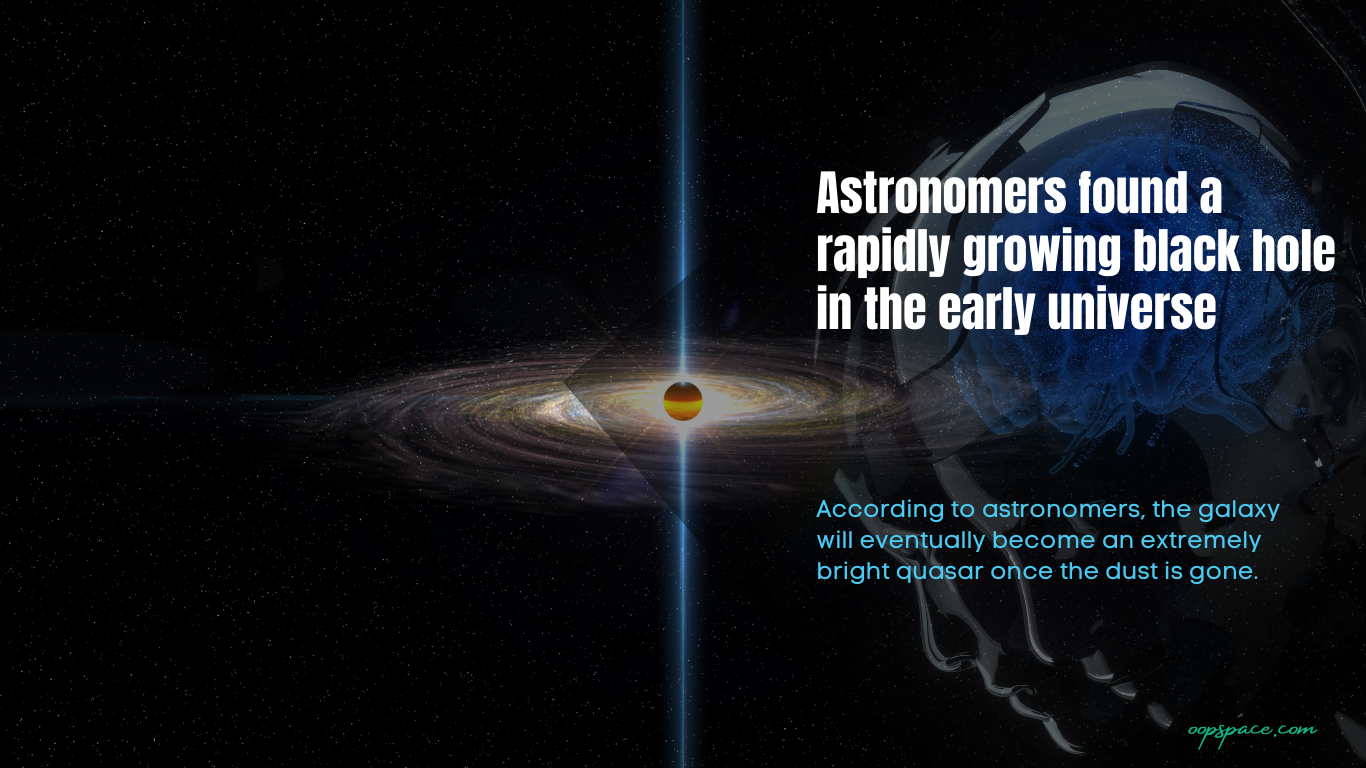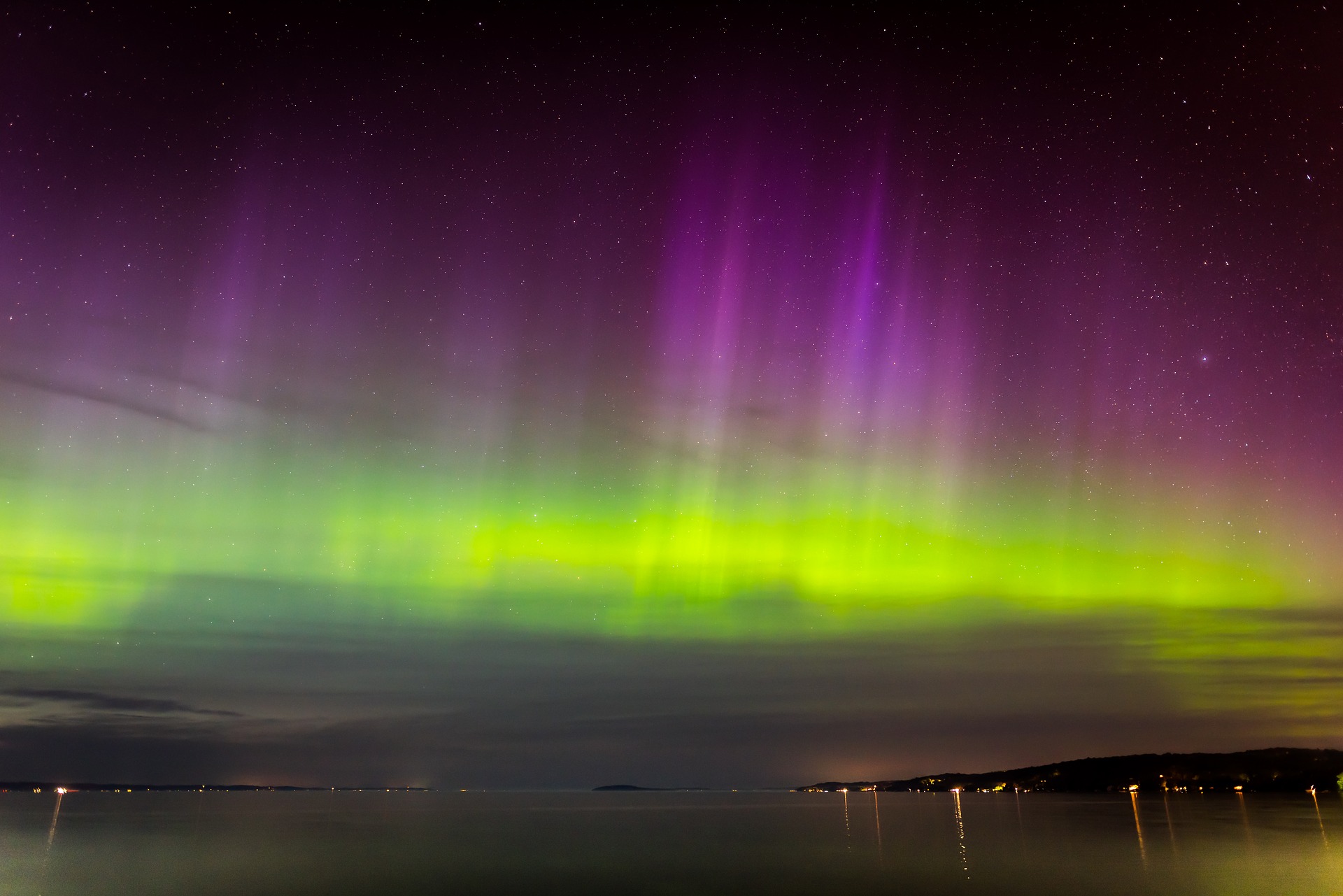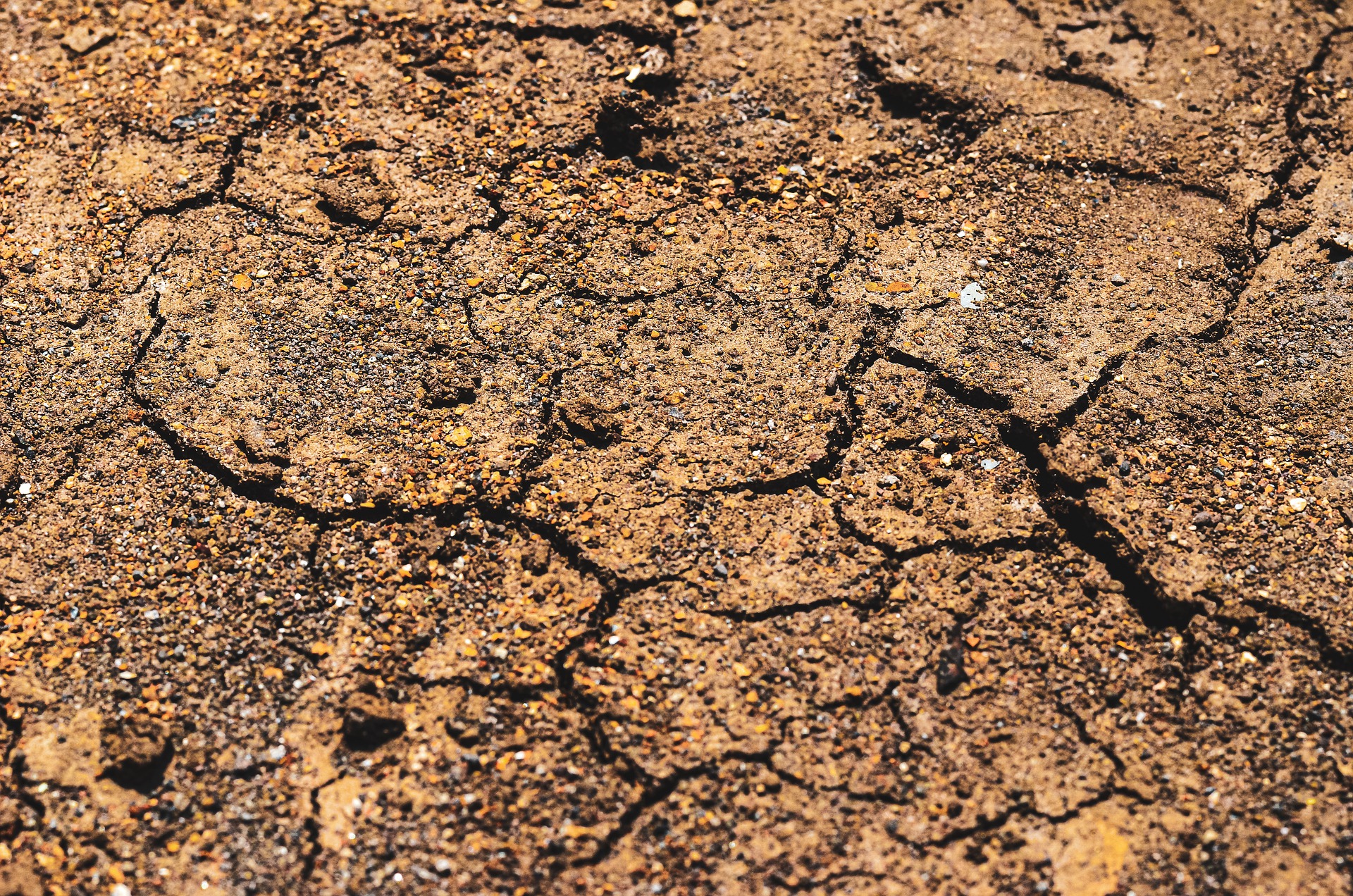Astronomers found a rapidly growing black hole in the early universe

Astronomers have identified a rapidly growing black hole in the early universe which is considered a crucial “missing link” between young star-forming galaxies and the first supermassive black holes. They have used data from the Hubble Space Telescope to make the discovery.
The artist’s impression of a supermassive black hole is inside the dust-shrouded core of a vigorously star-forming “starburst” galaxy. According to astronomers, the galaxy will eventually become an extremely bright quasar once the dust is gone.
The dusty black hole, which was discovered in a Hubble deep-sky survey, dates back to only 750 million years after the Big Bang.
Related Post:
In a paper published in the Astrophysical Journal Letters in in January this year, researchers named the quasar J0313-1806 and write that they have discovered a black hole that dates back to just 670 million years after the Big Bang – 20 million years older than what is now the second oldest black hole ever found.
Astronomers say a black hole is a cosmic body of extremely intense gravity from which even light cannot escape. Although black holes usually cannot be observed directly, they can be “observed” by the effects of their enormous gravitational fields on nearby matter.
Also Read:
According to astronomers, such oldest and thus most distant quasar and others like it are very important for understanding how the earliest black holes formed and for understanding cosmic reionization – the last major phase transition of our universe
Auto Amazon Links: No products found.


